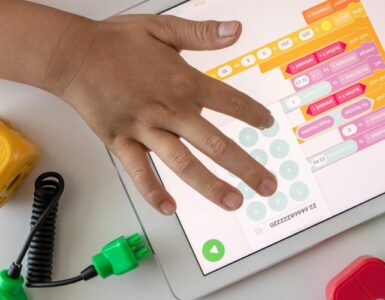Geographical barriers no longer confine learning. The world has come to a point where learning is increasingly happening beyond the physical classroom. Hence, remote learning technologies—a must-have integration—are essential for forming a great educational experience.
As education adapts to a digital-first approach, these innovative technologies are not just enhancing online learning—they are redefining it. Dive into the dynamic tools that are shaping the future of education and discover how they’re transforming remote learning into a vibrant and interactive experience.
Essential Remote Learning Technologies
Today, education has become a tech-savvy landscape where classrooms have become remote, artificial intelligence tailors lessons to individual needs, and virtual reality brings complex subjects to life. These are some essential remote learning technologies that are non-negotiable to establish a great educational experience.
Learning Management Systems (LMS)
LMS platforms are the backbone of remote learning, providing comprehensive tools for course delivery, attendance management, and assessment administration. Modern LMS platforms, such as Moodle and Blackboard, ensure compliance with regulations like FERPA, COPPA, and GDPR and adhere to standards such as LTI and WCAG 2.0. These systems streamline the management of educational content and facilitate seamless interaction between students and educators, making them indispensable for effective online education.
Video Conferencing Software
Video conferencing tools like Zoom and Microsoft Teams play a critical role in creating virtual classrooms. These platforms enable real-time interaction, allowing educators to conduct live lectures, hold one-on-one meetings, and facilitate group discussions. The face-to-face interaction provided by video conferencing enhances the learning experience, making remote education more engaging and interactive.
Digital Content Creation Tools
Tools for creating and sharing digital content, such as Google Classroom and Canva, have revolutionized how educators design and distribute learning materials. These technologies enable collaborative curriculum development and content sharing, ensuring that educational resources meet both local and international standards. By facilitating global collaboration, these tools help build a unified education ecosystem.
Adaptive Learning Platforms
Artificial Intelligence (AI) is increasingly being used to tailor educational experiences to individual needs. Adaptive learning platforms like DreamBox and Knewton analyze data on student behavior and performance to create personalized learning paths. These platforms adjust content and instructional methods based on students’ learning styles and progress, enhancing engagement and improving outcomes.
Virtual and Augmented Reality (VR & AR)
VR and AR technologies provide immersive learning experiences that go beyond traditional teaching methods. These tools allow students to explore virtual environments and participate in interactive simulations, which can enhance understanding and retention of complex subjects. For example, VR can offer virtual field trips, while AR can overlay educational content in the real world.
Conclusion
The integration of remote learning technologies is crucial for delivering effective online education. They are pivotal in creating engaging, personalized, and interactive learning experiences. As technology continues to advance, these tools will play an even more significant role in shaping the future of education, ensuring that remote learning remains dynamic and effective.








